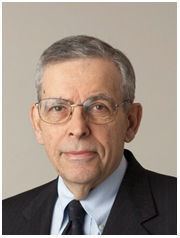Nationality American Name Philip Leder | Role Geneticist | |
 | ||
Born November 19, 1934 (age 90) Washington, D.C. ( 1934-11-19 ) Known for Nirenberg and Leder experimentgenetic code Notable awards Richard Lounsbery Award (1981)Dickson Prize (1981)Albert Lasker Medical Research Award (1987)National Medal of Science (1989)Heineken Prize (1990)William Allan Award (1997)Robert Koch Prize (Gold, 2008)Harvey Prize Books Two Public Lectures Delivered by Professor Philip Leder, Lee Kuan Yew Distinguished Visitor, 12-23 September 1990 Fields | ||
Cancer gene regulation philip leder
Philip Leder (born November 19, 1934) is an American geneticist.
Contents
- Cancer gene regulation philip leder
- Public understanding of science philip leder
- Early life and education
- Scientific Accomplishments
- Positions
- Awards
- References
Public understanding of science philip leder
Early life and education
Leder was born in Washington, D.C. and studied at Harvard University, graduating in 1956. In 1960, he graduated from Harvard Medical School and completed his medical residency at the University of Minnesota.
Scientific Accomplishments
Dr. Leder is one of the most accomplished scientists of the modern molecular genetics era, having made seminal contributions in each decade from the 1960s through the 1990s. He is perhaps best known for his early work with Marshall Nirenberg in the elucidation of the genetic code and the Nirenberg and Leder experiment. Since that landmark experiment, he has made several groundbreaking contributions in the fields of molecular genetics, immunology and the genetic basis of cancer. His group was the first to define the base sequence of a complete mammalian gene (the gene for betaglobin) which enabled him to determine its organization in detail, including its associated control signals. His research into the structure of genes which carry the code for antibody molecules was of pioneering significance. The main focus of this inquiry was the question of how the enormous diversity of antibody molecules are formed by a limited number of encoded genes. Leder's work on antibody genes was later extended to research into Burkitt's lymphoma, a tumour of antibody-producing cells, which involves the oncogene c-myc. This was crucial in understanding the origin of this type of tumor. In 1988, Leder and Timothy Stewart were granted the first patent on a genetically engineered animal. This animal, a mouse which had genes injected into its embryo to increase susceptibility to cancer, became known as the "oncomouse" and has been used in the laboratory study of cancer therapy.
Positions
In 1968, Leder headed the Biochemistry Department of the Graduate Program of the Foundation for Advanced Education in the Sciences at the National Institute of Health. In 1972 he was appointed director of the Laboratory for Molecular Genetics at the same institution and remained in that post until 1980 when he returned to Harvard Medical School as the founder of the newly formed Department of Genetics, occupying the John Emory Andrus Chair. He retired from this position in 2008.
Awards
Leder has been awarded various honors and is a member of the National Academy of Sciences, the American Academy of Arts and Sciences and the Institute of Medicine. His many prizes include the Lasker Award (1987), the National Medal of Science (1991), the Harvey Prize, and the Heineken Prize awarded by the Royal Netherlands Academy of Arts and Sciences. In November 2015 he has been awarded an hononary doctoral degree from the Medical Faculty of the University of Basel for his lifetime achievements.
